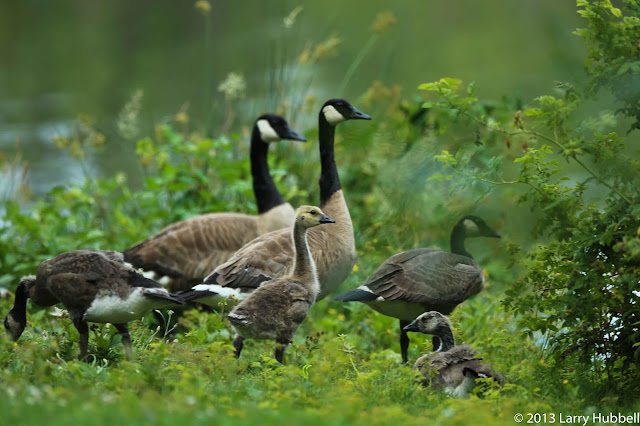For the last week the fledgling Bald Eagle, from the Broadmoor nest, has spent a good deal of time on the south side Union Bay. This is a refreshing change from last year when Beatrice, the older eaglet, apparently left the area as soon as she could fly.
Last Sunday morning Si'ahl spent some time surveying Union Bay from the cottonwood tree on the north side of Foster Island.
It was interesting to see, when Si'ahl looked toward the nest and prepared to leave Foster Island, the variegated mixture of light and dark feathers under the wing and along the side of the body.
On Monday evening Si'ahl settled down and silently watched the setting sun from the nesting tree.
On Wednesday evening Si'ahl and Albert sat in Albert's favorite tree just south of 520. The tree is roughly a hundred yards east of the Beaver Lodge Sanctuary along the north shore of the Madison Park.
Although Bald Eagles are undoubtedly the strongest birds around Union Bay they are not the fastest or the most agile. In fact their eye sight is at least as important and useful to them as their strength. Whether they are on a 520 light pole, in one of the trees along the shore or riding the thermals high over head the adult eagles are always watching. This is their most common approach to hunting.
None of these methods of hunting require much energy but they do require vision. Sooner of later the eagles spot an opportunity. Using gravity to increase their speed they swoop down on the unsuspecting fish or fowl. Sometimes they swoop down on both at once. In which case they generally use intimidation to take the fish away from the bird that just caught it. But in either case it is their eye sight that allows them to spot these opportunities.
Their eye sight and strength are gifts that they are given. On the other hand having the patience to make use of these abilities appears to be a skill that must be learned. On Wednesday evening at sunset Albert sat silently demonstrating patience. Si'ahl, sitting close by, appeared completely oblivious to the lesson.
Si'ahl was making a nearly constant, short, soft call. It was not the urgent "feed me" call that is made when food is near by and it was not the musical trilling that the adults sometimes use as a greeting. The soft, insistent call seemed strikingly similar to a bored teenager humming and tapping their fingers while waiting for their parents finish a phone call, get ready to leave the house or to simply get to the point.
Finally when the youthful energy could no longer be contained Si'ahl began walking the branch...
...with of course some wing flapping to maintain balance.
Here is a video demonstration.
Ultimately even this was not enough movement and Si'ahl burst out of the tree, circled a few times and then headed north across Union Bay.
It is fortunate that Si'ahl has patient parents. For now Eva and Albert are bringing food to Si'ahl. This is good because Si'ahl's constant noise and movement will not allow many opportunities to sneak up on prey. However Si'ahl has the rest of summer and most likely into the fall to learn patience, hunting skills and how to be self-sustaining. Winter will be the ultimate test.
The situation is similar in someways to what we face. Much like Si'ahl depending on parental support our society depends on resources that may not be available in the future. In the Northwest we are lucky to use hydropower, but for 90 percent of the nation this is not the case and most of us do not use hydropower to run our automobiles. Hopefully, watching Si'ahl will remind us that our society is just a fledgling as well. When our society becomes truly self-sustaining it will have reached the first stage of maturity.
In any case we are very lucky that Si'ahl has remained around Union Bay where we can watch the process and see the growth
Have a great day on Union Bay....where nature lives in the city!
Larry
Odds and Ends:
Here are a few bonus shots of what Si'ahl was missing while making all the noise.










































